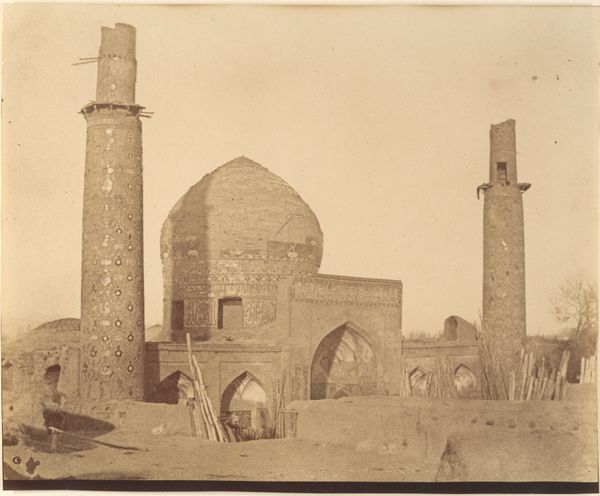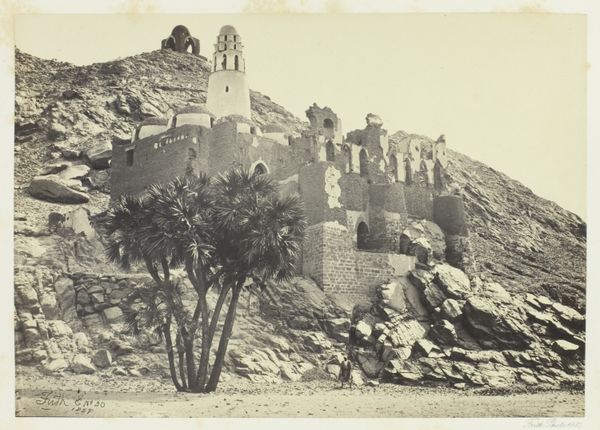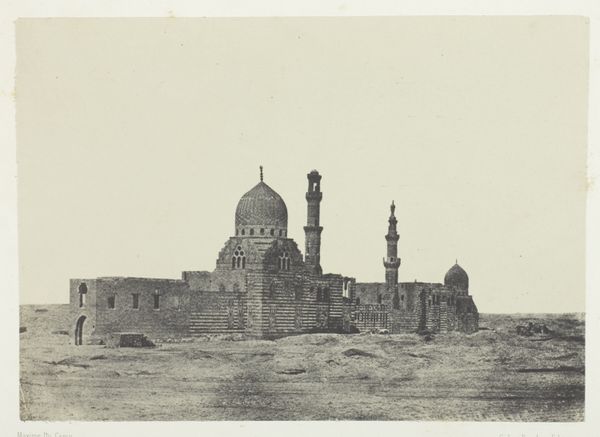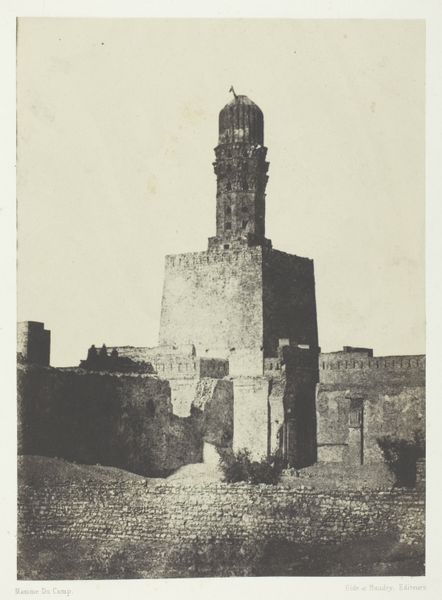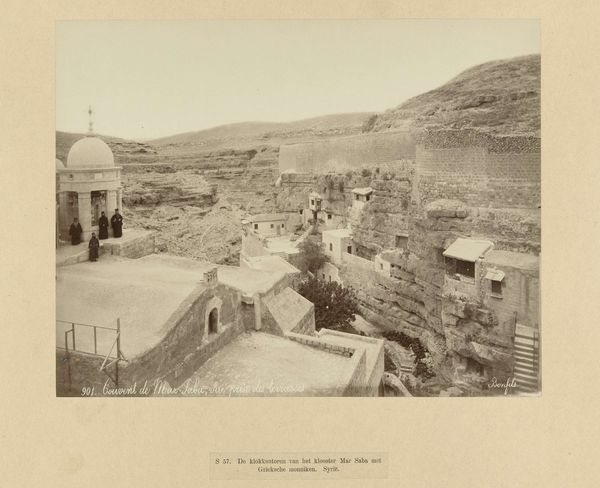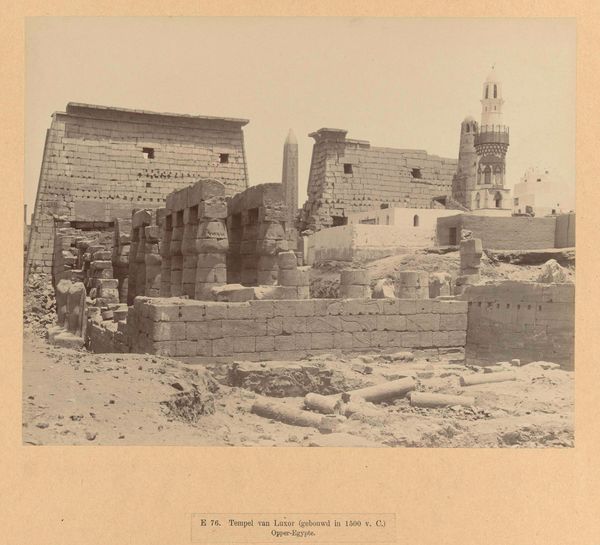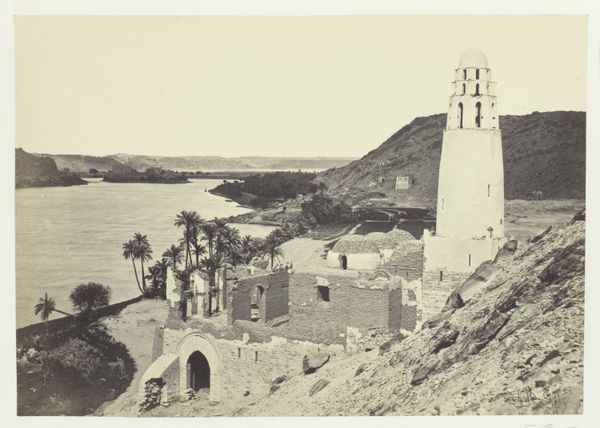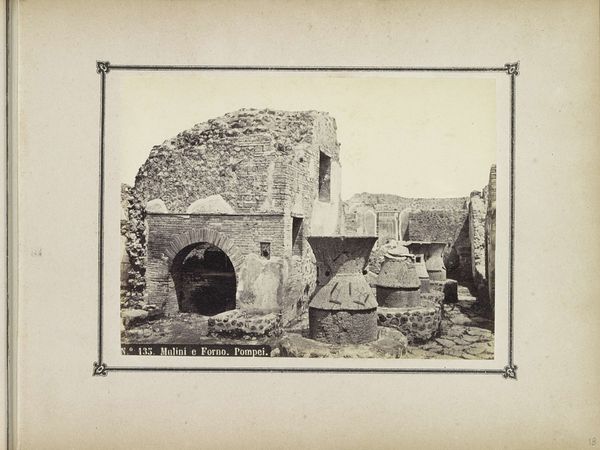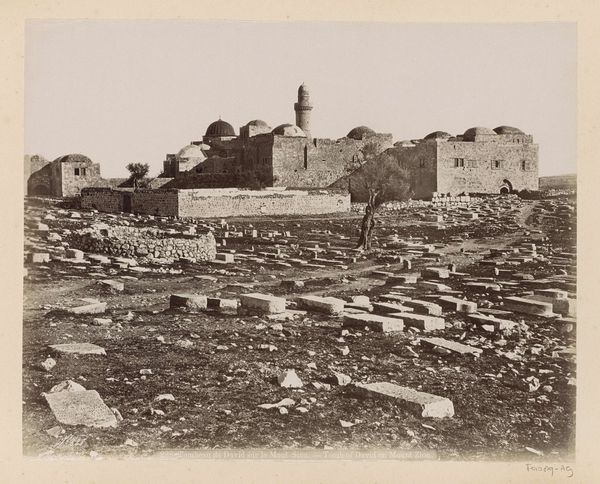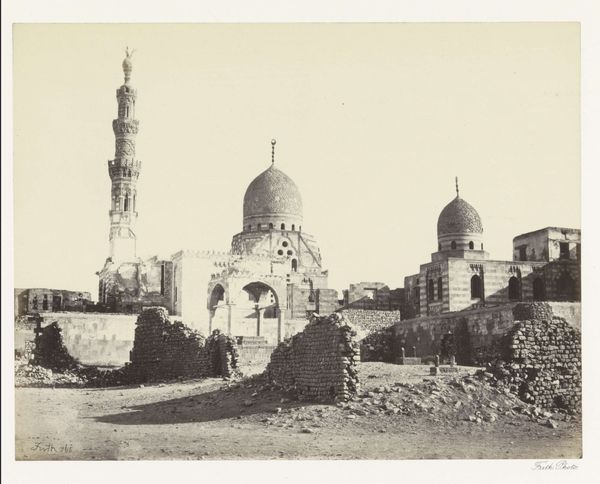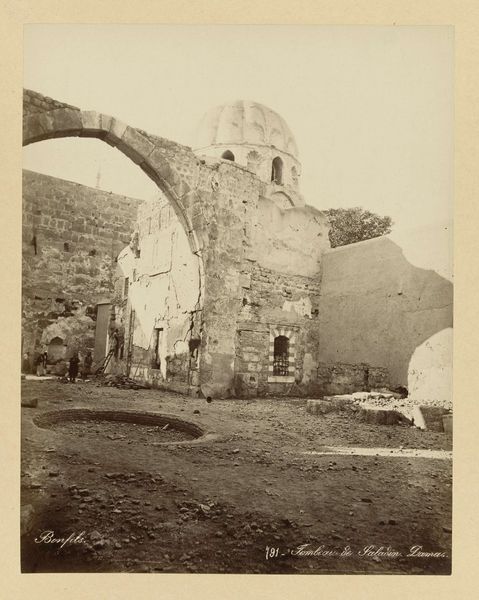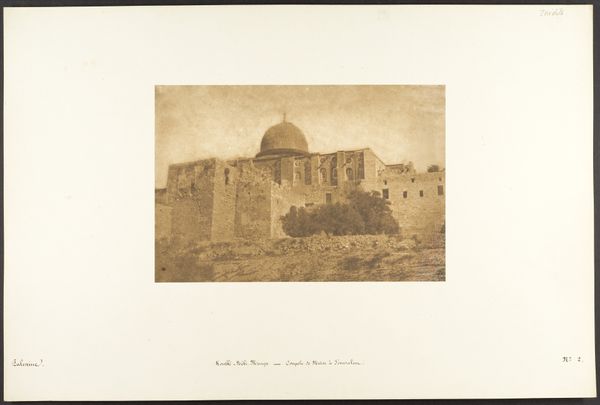
Mosquée de Bellal au Village de Bab; Nubie Possibly 1849 - 1852
0:00
0:00
print, etching, paper, photography
#
16_19th-century
# print
#
etching
#
war
#
landscape
#
outdoor photo
#
paper
#
photography
#
egypt
#
ancient-mediterranean
#
france
#
islamic-art
Dimensions: 16.3 × 21.3 cm (image/paper); 30 × 43 cm (album page)
Copyright: Public Domain
Maxime Du Camp made this photograph of the Mosquée de Bellal in Nubia using the calotype process, one of the earliest photographic techniques. The calotype, unlike the daguerreotype, used paper negatives, allowing for multiple prints. This was crucial for the rise of photography as a tool for documentation and dissemination of information. Du Camp was commissioned to document Egyptian monuments, and the calotype allowed him to bring back visual records of his travels. Look closely at the image's grainy texture and soft focus, a result of the paper negative. The play of light and shadow across the ancient stone emphasizes the building's age and scale. What might the process of photographic documentation mean for our understanding of such monuments, for those who could not travel to see them in person? Considering the materials and techniques of photography alongside traditional art forms allows us to consider photography's own history of creative practices.
Comments
No comments
Be the first to comment and join the conversation on the ultimate creative platform.
